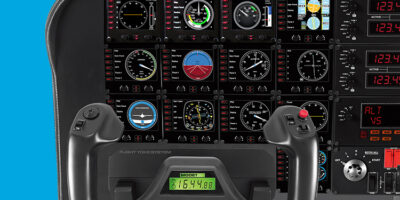The Development of Supersonic Military Jets
The quest for speed in military aircraft has a long history. From the biplanes of World War I to modern stealth fighters, each generation seeks faster, more advanced machines. The arrival of supersonic jets marked a significant leap. Flying faster than the speed of sound has been a military goal since the mid-20th century.

The term supersonic refers to speeds exceeding Mach 1, the speed of sound in air. For military aircraft, this leap symbolized tactical superiority. Research and innovations led by American and Soviet engineers in the Cold War era pushed boundaries continuously.
Pioneers of Speed: Early Supersonic Jets
The Bell X-1 was a pioneer, although not a military jet. In 1947, it became the first aircraft to fly faster than sound. It was the precursor to integrating supersonic speeds into military designs. The X-1’s success proved supersonic flight was achievable.
The Cold War stoked a competitive drive between the United States and the Soviet Union. The need for speed was not just about prestige. It meant air superiority, quick strike capabilities, and improved evasion of enemy defenses.
The F-100 Super Sabre became the first U.S. fighter capable of sustained supersonic speeds in 1954. This marked the practical application of supersonic flight in military operations. It set the stage for a series of faster and more advanced jets.
Soviet Competition: The MiG Series
The Soviet Union responded with their own designs. The MiG series of fighters was developed to challenge American air power. The MiG-19 was the first Soviet jet capable of supersonic speeds, introduced in the 1950s.
The MiG-21 followed, becoming one of the most produced supersonic jets ever. It combined speed with agility, serving in numerous air forces around the world. Its reputation as a workhorse of the Soviet Air Force cemented its place in history.
Soviet engineering focused on reliability and ease of production. This approach allowed rapid deployment across various theaters, keeping pace with the U.S. military strategies.
The Quest for Mach 3: SR-71 Blackbird
Lockheed’s SR-71 Blackbird emerged as a symbol of speed and technology. Flying at speeds over Mach 3, it was an unparalleled reconnaissance aircraft. Developed in the 1960s, the Blackbird remains one of the fastest jets ever built for over half a century later.
Its design focused on stealth and speed to evade interception. Radar-absorbing materials and innovative aerodynamic designs allowed it to fly at high altitudes and speeds. This gave the SR-71 its iconic status in aviation history.
The Blackbird’s ability to fly from New York to London in about 1.5 hours demonstrates its speed. Although retired in the 1990s, it continues to captivate and educate aviation enthusiasts and professionals alike.
Concorde’s Courser Brother: The MiG-25 Foxbat
The MiG-25 Foxbat was another breakthrough from Soviet design bureaus. Capable of Mach 3+, it embodied the Soviet emphasis on raw speed. First flown in 1964, it primarily served as an interceptor and reconnaissance platform.
Built with a focus on high speed and altitude performance, the MiG-25 aimed to counter American strategic bombers. Its speed meant it could intercept targets at incredible speeds, giving Soviet air defenses significant reach.
Although limited in maneuverability, it marked a turning point in interceptor design, influencing later U.S. designs such as the F-15 Eagle.
Modern Marve: The F-22 Raptor
The F-22 Raptor embodies modern jet technology integrating speed with stealth. Developed by Lockheed Martin, it combines supersonic cruise capabilities with advanced avionics. The emphasis isn’t just on raw speed.
The F-22’s supercruise allows it to maintain supersonic speeds without afterburners. This feature enhances operational range and efficiency, making the Raptor a formidable air dominance fighter.
Its advanced radar, sensor systems, and stealth design offer a complex package that modern defense strategies require. Although not as fast as the SR-71, its role is different: a capable, adaptable fighter for 21st-century conflicts.
Continued Impact and Future Developments
The legacy of fast military jets continues to influence aviation. Cutting-edge research into materials, aerodynamics, and propulsion pushes the boundaries of what is possible. Military needs still prioritize speed as an essential component of strategy and defense.
Hypersonic aircraft, such as those being developed by DARPA, explore speeds beyond Mach 5. These advancements promise even quicker response times and new strategic possibilities.
Supersonic and hypersonic technologies drive innovation across civilian fields as well, influencing commercial aviation and spacecraft design. The importance of speed remains a critical factor in both military and technological advancements.




Subscribe for Updates
Get the latest articles delivered to your inbox.
We respect your privacy. Unsubscribe anytime.